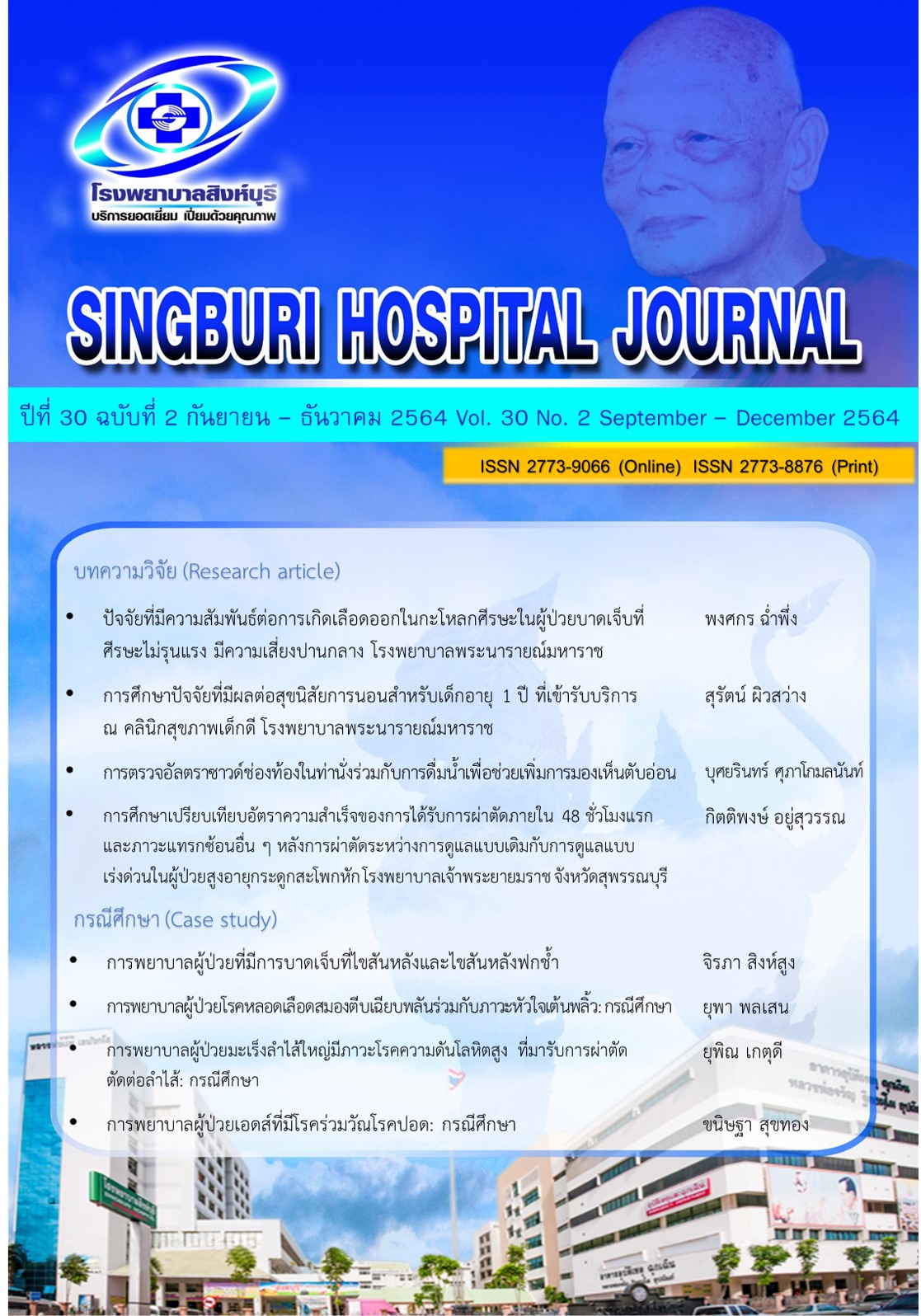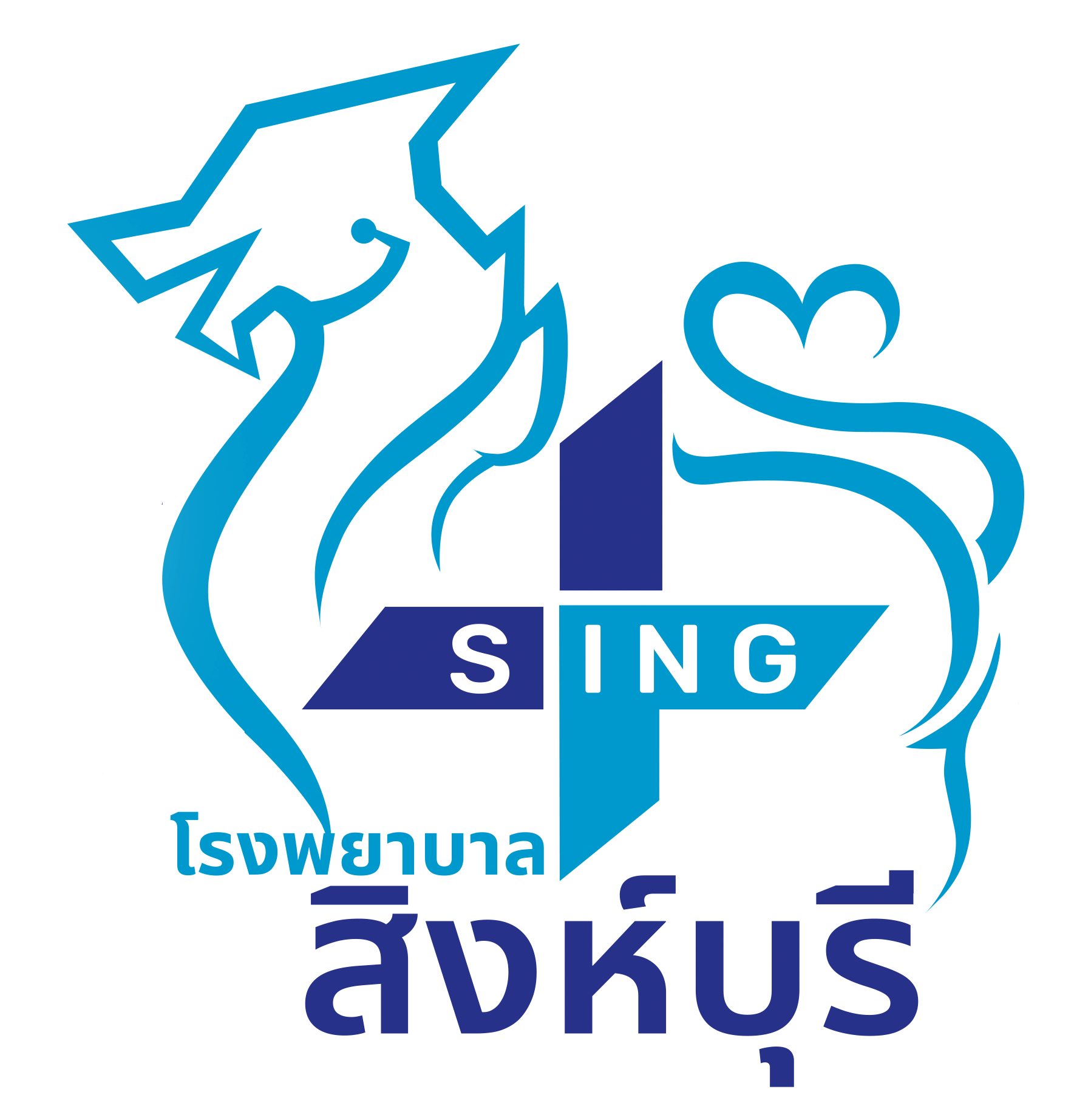Factor associated with intracranial hemorrhage in mild traumatic brain injury moderated risk patients at King Narai Hospital
Keywords:
Mild traumatic brain injury moderate risk, intracerebral hemorrhage, computed tomography of brainAbstract
Background : Mild traumatic brain injury patients with moderate risk in ER are usually sent for the computed tomography (CT Scan) of the head for evaluation which lend to unnecessary expenses due to small presentnce of abnormal finding in CT – Scan, These is a study to describe relevant factors associated with intracranial hemorrhage in mild traumatic brain injury patient with moderated risk.
Meterial and Mothods : This is a retrospective cohort study of 864 patients who were Diagnosed with mild traumatic brain injury moderate risk in King Narai Hospital during 1 year period to indentify factors associated with intracranial hemorrhage
Result : Eight hundred sixty four patients were included in this study, only 16.66% were found with intracranial hemorrhage in CT – Scan, Significant associated factors with the presence of intracranial hemorrhage were (1) Glasgow Coma Score (GCS) of 13 – 14 (odd ratio : OR 7.42, 95% confidence interval : CI = 4.40 – 12.53, p = 0.000) (2) Presence of vomitting (OR = 2.16, CI = 1.24 – 3.75, p = 0.006) (3) History of loss conscionshess (OR = 1.81, CI = 1.03 – 3.15, p = 0.030) (4) Severe headache (OR = 2.19, CI = 1.099 – 4.47, p = 0.020) (5) warfarin usage (OR = 20.73, CI = 1.79 – 38.42, p = 0.010) and (6) History of falling on the same level (OR = 0.32, CI = 0.11 – 0.90, p = 0.030)
Conclusion : Factors associated with intracranial hemorrhage in mild traumatic brain injury moderate risk were GCS of 13 – 14, Presence of vomitting History of loss of conscionshess, Severe headache, warfarin usage and History of falling on the same level
Downloads
References
2. ศูนย์ข้อมูลอุบัติเหตุ THAI RSC. ศูนย์ข้อมูลอุบัติเหตุ เพื่อส่งเสริมวัฒนธรรมความปลอดภัยบนท้องถนน 2021. Available from. http://www.thairsc.com
3. สุรกานต์ ยุทธเกษมสันต์. เอกสารเผยแพร่ในคณะทำงานจัดทำแนวเวชปฏิบัติ กรณีบาดเจ็บที่ศีรษะ. สถาบันประสาทวิทยา กรุงเทพมหานคร, พฤศจิกายน 2561.
4. Levin HS. Outcomes from mild head injury. In : Narayan RK, Wilbergen JE, Povlishock JT, editors. Neurotrama. New York, NY Mc Graw – Hill, 1996.
5. วสันต์ ลิ่มสุริยกานต์, พิมพ์กานต์ หล่อวณิชย์. การศึกษาปัจจัยที่มีความสัมพันธ์ต่อการเกิดเลือดออกในสมองในผู้บาดเจ็บศีรษะระดับความรุนแรงน้อยที่มีความเสี่ยงระดับปานกลางที่โรงพยาบาลพระนครศรีอยุธยา. TUH Journal online Volume 4 No.3 September – December 2019
6. กรวรรณ หาญประกอบสุข, การส่งตรวจเอกซเรย์คอมพิวเตอร์สมองในผู้ป่วยบาดเจ็บบริเวณศีรษะของโรงพยาบาลลำปาง. วารสารกรมการแพทย์ ปี 42 ฉบับที่ 5 กันยายน – ตุลาคม 2560 ; 85 – 92
7. Madhusudhan Nagesh. Role of repeat CT in mild to moderate head injury: an institutional Study. Neurosurg Focus 47 (5):E2, 2019
8. 7.J-L afGeijerstam, M Britton. Mild head injury: reliability of early computed tomographic Findings in triage for admission. Emerg Med J 2005; 22:103-107
9. Dr.Lutfi KirdarKartal. Early and Delayed Ct Findings in Patients with Mild-to-Moderate Head Trauma Turkish Neurosurgery 2011, Vol:21, No:4, 591 – 598
10. Archana Wagnekar. Computed Tomography Profile and its utilization in head injury Patients in emergency department. Journal of Emergencies, Trauma and shock. Janauary-March 2018
11. Jennett B. Murray A, Carlin J, McKean M, MacMillan R, Strang I. Head injuries in threeScottishneurosurgical units. Scottish head injury management study. Br Med J. 1979; 2(6196): 955-8.
Downloads
Published
How to Cite
Issue
Section
License
Copyright (c) 2021 Singburi Hospital Journal

This work is licensed under a Creative Commons Attribution-NonCommercial-NoDerivatives 4.0 International License.
The published articles are copyrighted by Singburi Hospital.
The statements appearing in each article in this academic journal are the personal opinions of each author and are not related in any way to Singburi Hospital or other hospital personnel. Each author is solely responsible for all contents of their article. If there are any errors, each author alone will be responsible for their own article.







